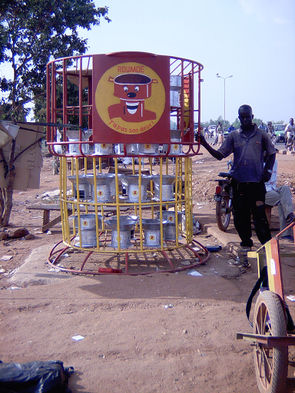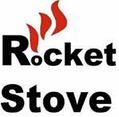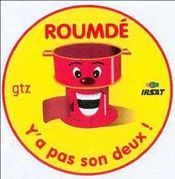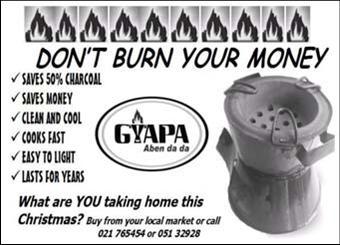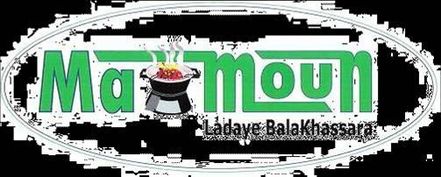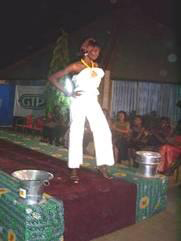Knowledge fuels change - Support energypedia!
For over 10 years, energypedia has been connecting energy experts around the world — helping them share knowledge, learn from each other, and accelerate the global energy transition.
Today, we ask for your support to keep this platform free and accessible to all.
Even a small contribution makes a big difference! If just 10–20% of our 60,000+ monthly visitors donated the equivalent of a cup of coffee — €5 — Energypedia would be fully funded for a whole year.
Is the knowledge you’ve gained through Energypedia this year worth €5 or more?
Your donation keeps the platform running, helps us create new knowledge products, and contributes directly to achieving SDG 7.
Thank you for your support, your donation, big or small, truly matters!
Commercialisation of Cookstoves
Cooking Energy System | Basics | Policy Advice | Planning | Designing and Implementing ICS Supply | Designing and Implementing Woodfuel Supply | Climate Change | Extra
Overview
A large-scale, successful and sustainable market in improved cookstoves can only function where there are sufficient qualified entrepreneurs and premises to serve and develop the stove market without relying on subsidies. The principle that promotion and scaling up of improved cookstoves should follow an essentially commercial approach is one of the main lessons learnt from numerous stove projects supported by GIZ HERA. Initial (partial) subsidies may be necessary during an introductory phase to establish stove production, but they should be limited in time and scale.
Experience has shown that many stove producers lack basic commercial skills and/or have technical shortcomings. Such problems can be overcome by appropriate training, visits to successful manufacturers, and more specific training approaches that are developed according to each entrepreneur’s needs.
|
Stove Training Programmes – The Tanzanian Experience A project supported by GIZ in Tanzania ‘Promotion of Renewable Energy’ has shown that the combination of both technical skill training and business training is highly effective. Technical courses demonstrate improved stove building techniques, whilst business training focuses mainly on supporting trainees to develop their own basic business plans. Without such support, stove producers have no means to improve their technical and / or entrepreneurial shortcomings. They may not be aware that they need additional training to produce high quality stoves, and they may need help in finding out where to get advice and support. In these situations, a stove project can play a decisive role. This project has developed a training module for the janja stove; a stove that is based on the rocket stove principle and is constructed using either cement or clay. The training model comprises simple, easy to understand experiments to demonstrate improved stove production techniques. The curriculum was used in several training courses. Further findings from the training courses, such as the need for proper selection of trainees, can be found in the training curriculum (See: Janja stove training curriculum). |
Business Management
Developing Business Skills
Most producers have very limited (or no) knowledge of the design and function of business plans. Many find it difficult, for example, to make realistic price/profit calculations. Other entrepreneurs do not know how to calculate the price for services, or perhaps are not aware of the necessity of considering the cost of services as a key component in business calculations. For some, the difference between profit and turnover may be unclear.
Knowing how to develop a business plan is extremely helpful for any entrepreneur, be it the owner of a small workshop, or the manager of a medium-size stove factory. The business plan is the most essential document for launching, expanding and managing any successful business. The business plan describes what the business is expected to do, how and where it will be done, and how the business will be financed and managed.
For producers who require access to (bank) credit, a sound business plan is imperative for raising capital and capturing the interest of investors. Lenders and investors require a business plan to evaluate their risks, and to assure them that they will get a fair return on their investment.
A good business plan accomplishes the following:
- Draws a clear picture of the business objectives and goals.
- Provides a thorough overview of the business.
- Presents the strategy and the financial data supporting it.
- Shows the potential strengths and weaknesses of the business.
- Gives a timeline of events and financial milestones against which actual results can be compared.
- Gives prospective partners and investors a means of determining whether the business warrants their interest—and their money.
For further details on how to develop a business plan, which elements are obligatory etc. see REED toolkit, a Handbook for Energy Entrepreneurs, published by UNEP in 2003. REED toolkit, a Handbook for Energy Entrepreneurs, published by UNEP in 2003.
Business plans can be very detailed and elaborate, or contain only basic information. The very minimum that needs to go into a simple business plan for stove producers should include:
- price for services
- basic sales strategies
- availability and costs of raw materials
- strategies to mitigate possible challenges
- target month sales
Additional areas where stove producers often need support are bookkeeping and business dialogue techniques, such as how to deal with customers, convincing arguments, etc.
To meet these needs (which are regularly encountered in many developing countries), so called ‘Entrepreneurship Development Programs (EDPs)’ were developed in India to promote small and medium size enterprises by providing tailor-made training. GIZ has further developed this approach through its CEFE concept, ‘Competency based Economies through Formation of Enterprise’. CEFE aims to reinforce enterprise skills using participatory and active learning approaches. (www.cefe.net).
CEFE courses offer comprehensive training modules that use an action-oriented approach and learning through experience. This develops and enhances business management skills and personal competence. It is a highly adaptable concept designed as much for academics as for people with low educational backgrounds (as experiences working with street children have shown). The course’s overall objective is to improve entrepreneurial performance through guided self-analysis, by stimulating a business mentality, and through building up business competence.
Project staff have found these courses to be an excellent complement to technical skills training. They are very useful in preparing interested producers for setting up their own stove businesses, and they reinforce and enhance the management skills of stove entrepreneurs. CEFE courses offer solid instruction complemented by clear methodological guidelines that can be adapted to each participant’s needs and requirements.
Additional information resources
--> Training Modules for Small and Medium Enterprises (SMEs)
Ensuring Stove Quality and Acceptability
To develop a successful stove business, it is vital to have a stove with several desirable product attributes. The stove should be efficient, affordable, clean burning, convenient for cooking, and adapted to local needs, habits, and tastes. The development of a stove business can be accelerated by supplying a variety of different types/sizes of stoves which can satisfy the needs of a wide range of customers. Developing stove models that meet the criteria mentioned above is an ambitious task.
| Meeting Customers’ Needs To develop well-accepted and popular stoves, producers have to look at their customers’ needs, habits, and preferences. People tend to be quite conservative in their cooking habits, and will only change if producers provide something they perceive as better. Thus, stove producers need to be sensitive to people’s preferences, and be willing to respond with changes to stove design if changes in cooking patterns occur. |
Despite years of experience, stove producers often do not have the specific skills needed to produce high quality stoves. Projects fill this gap by providing appropriate training. Modules have been developed and implemented, and these need to be adapted to the local conditions.
Creating a stove that meets various customer criteria is a challenge. It is at least as important for a sustainable stove business to supply the market with stoves that are of a consistently good quality and which comply with given quality standards. Project support is usually needed to develop schemes that include, for example, quality control mechanisms, certification schemes, and warranties. As a first step, the Tanzanian project handed out a certificate to each trainee who had the proven skills to build quality stoves without supervision.
The active involvement of local partners, government representatives, and private institutions right from the beginning is essential as it gives these groups an opportunity to learn and, eventually, to be able to design such schemes themselves - a necessary prerequisite for taking over total ownership at the end of the project.
Developing Political and Economic Frameworks
Stove producers and retailers need to understand and comply with the relevant rules and regulations governing their businesses. Often they are not fully aware of the existing political and economic frameworks. This is particularly true for those working in rural areas. However, when setting up and running a business, it is essential to know about legal, tax and duty regulations. It is helpful for the business to be aware of government support structures; access to business promotion and service structures, financing and credit mechanisms, global and/or regional infrastructural conditions/obstacles etc.
Projects can support new entrepreneurs by increasing access to information through working with the media, and by introducing or developing organisational structures that promote information sharing between producers, retailers and producer groups.
|
Key Points in Business Development and Training Projects supporting and promoting the development of improved stove businesses need to:
The training courses found to be the most critical comprise:
|
Marketing Improved Cooking Stoves (ICS)
Marketing is defined as getting the right product (in this case a stove), of the right quality to the target users in the right quantity, and at the right price in the right place at the right time and with each business person in the marketing chain making a fair profit. This calculation should not include those involved in the stove project, only those running the business.
| Product, Price, Place, and Promotion As a general rule, marketing includes all the activities that lead to increased profitable sales. The classic marketing approach involves the so called 4Ps: Product, Price, Place, and Promotion. Hence, the 4 Ps form the four main pillars of the marketing mix. These include the identification and development of new Products, at an appropriate Price, through distribution channels and selling in the right Places, supported by Promotion. Recently this number has been increased (up to 10 Ps) to include among others People, Processes, Packaging and so on. (www.wikipedia.org). However, this paper refers to the classical model of 4 Ps, because it is still the most widely used one. |
The 4 Ps: Product
This ‘P’ includes the range of products, their quality, the product design, branding, packaging and accompanying services.
These key factors should be considered:
- Design and type of improved stove has to meet customer’s needs
- Stoves need to comply with quality standards that have to be made known to the purchaser
- Improved stoves need to have a good reputation: to be known as durable and easy to handle
- Improved stoves have to be attractive for the market, thus they should have status, style, and other desirable product attributes
Product or target group first?
- Either you dispose already of a stove type (you are not free in the choice, you don’t have the possibility to develop a new stove): then you have to look for a target group that most fits to the stove you have (based on your enquiries on cooking habits and users’ motives)
- Or you have testing and developing facilities: then you can identify your target group first and look if you can get your stove fit into their ideas
The “right” stove:
- is an improved stove, i.e. it saves at least 40 % of fuel in comparison to the stove traditionally used
- meets the purchase power of the target groups
- fits into cooking habits of the users (don’t waste your time in trying to change cooking habits – it will not work)
|
Please consider, Cooking habits are composed of a multitude of elements:
|
In addition to cooking habits, one has further to look both at the users’ cooking needs and at their complaints on the stoves they use. What would users prefer to change with regard to their previous stoves? How should a new stove look like compared to the old cooking device? These motives correspond not necessarily to the project’s (promoter’s) motives.
What are the project’s (promoter’s) motives to introduce an improved stove?
- Protecting the environment: the stove uses less biomass
- Fighting against climate change: the stove emits less CO2
- Fighting against indoor air pollution: the stove emits less smoke
What are possible motives for users to want to change their stoves?
- Saving money: the stove uses less fuel
- Saving time: the stove must be quicker
- Keeping the kitchen proper: the stove produces less ash
- Being less exposed to smoke: the stove emits less smoke
- Being less exposed to heat and the danger of burns: the stove is better isolated,/ the fire is shielded
- Being modern => the efficient stove might have the image of being more modern compared to the previous cooking technology
Cooking habits and user motives can change within a country according to regional and social differences. Whereas cooking habits are easy to determine, user motives are often unconscious and implicit as people often don’t even think of alternatives. To determine these factors, quantitative and qualitative marketing research is an indispensable tool.
Additional Information Resources
For detailed information on baseline studies, production systems, etc. see also chapters on planning and technology.
The 4 Ps: Price
Pricing of an efficient stove has to find the equivalence between
- The producer’s need to make profit (only when he makes profit he will continue production even after the end of the project). The price thus has to include all the costs associated with producing and selling the item.
- The consumer’s desire to have a cheap stove.
What “cheap” means depends on:
- The price of the traditional stove. When the traditional stove is a 3-stone-fire, the margins for an improved stove are very low: the improved stove has to compete with a stove that is for free - even if people save money on fuel while using it.
- The purchase power within the population. In least developed countries margins are much lower as in countries where a considerable middle class exists.
Getting the Price Right
|
When working with small scale producers in the informal sector, price calculation has to be included in the training. Producers also have to learn to convince the customer of the necessity to buy improved stoves that are in general more expensive than the traditional one.
The 4 Ps: Place
Planning the location of manufacture, sales and distribution is important:
A situation often to be found is having selling points at the same site where production takes place.
Nevertheless, the two points have to be considered separately:
The place of production:
The choice of the production place depends on:
- The availability of raw materials: locating workshops close to raw material supplies will reduce transport costs.
- The availability of technical skills: for many stove types experienced producers are needed. Even if it were possible to get producers to move to production places, manifold social and economic considerations can be an obstacle to this: e.g. in West Africa, metal work is often caste bound and members of specific castes cannot not install themselves everywhere. Neither can people who are not born into one of the appropriate castes engage in metal stove production. Or, on the other hand, ceramic stoves can only be produced where both the potters and the clay are available.
- The availability of production machines in the case of semi-artisanal and mass production.
The place of sale:
The place of sales and distribution is of high importance to get the stove easily accessible, to present it to the potential user and to bring it to places where the client can easily purchase it.
Whereas in the case of portable stoves, the stove can “go” to the client, in the case of fixed stoves it’s the producer’s skill that has to be brought to the customer. For more information on these two different production systems see: selection of technology.
The commercialisation of portable stoves
In the commercialisation of portable stoves, two scenarios can be found:
- The producer as seller to the client
- Sales through a retail system
These patterns have in general developed in an independent way from the existence of improved stoves, i.e. they have been in existence well before the introduction of ICS and are integrated into the general consumption patterns.
1. The producer as seller
In Burkina Faso, 90 % or more of the sales are done directly from the producer’s workshop. In the Western part of the country, producers typically employ ambulant salespersons (usually relatives) which receive a profit margin from the sales price. In other regions, producers simply stay in their workshops waiting for clients. Clients know “their” producer and when they need a stove, they go to see him.
This is a scenario for small scale producers who already before having been trained in producing improved stoves, produced traditional ones. In this case the producers have also to be trained in better presenting and offering their stoves and in convincing the client to change to the new – and in general more expensive – one.
The case is different when new stove producers enter into the market through the project’s activities. Then, in addition, their addresses and working places have to be communicated to the public.
Generally, the stove producers have to be encouraged to make their own publicity, e.g. street bills, publicity on cars, bicycles, etc.
Strategic selling points at places where many people pass can attract much more customers than workshops that are sometimes not so easy to find.
The producer being at the same time the seller of stoves can hinder considerably the wide spread of the stoves.
In most cases this system is difficult to change, because of:
- Profound mistrust of producers to collaborate with resellers. This is mostly based on quarrels on paying moods: are the producers paid when they deliver to the reseller or when the reseller has really sold?
- The tendency of maintaining all the profits generated from the stove business within the family (most clearly in those cases where resellers are relatives).
These motivations are difficult to break up – even if it’s still worth trying. Means might be:
- Installation of a warranty fund that steps in when either the producer or the reseller faces losses due to the misappropriation of stoves.
- Creation of meeting possibilities for producers and resellers where they can discuss and resolve their disputes.
- Show rooms: In Malawi, one producer of institutional metal rocket stoves is selling off his workshop. As his workshop is in a small village 80 km away from the next bigger city, he realised quickly that he would need a show room to attract customers. He thus rented a show room at the fare compound to display his stoves.
2. Sales through a retail system
Retail systems can be found on very different levels depending on the country’s economic level and the shopping habits of its habitants:
- Supermarkets or petrol stations (chains)
- Sales points
- Kiosks
- Ambulant salespersons
- Associative structures
While working with already established producers, the project has to analyse properly where it needs to intervene to support stove sales and to boost dissemination of improved stoves. In general, the choice of the sales structure to be enforced depends on the general shopping habits of the target groups. These can best be determined by a thorough market study.
|
Points to consider:
|
Examples for boosting stove sales through commercial structures:
- Make the sales point visible: indication panels
- Make the sales point known: advertisements in journals or radios
- Make sales persons more visible and flexible: i.e. through pushcarts
Special sales points such as kiosks or energy shops can be a good idea, because they are very visible. The challenge can be that clients have to adapt their shopping habits and get used to the idea of buying stoves there.
|
Example: roumdé kiosks in Burkina Faso |
|
Example: betjek system in Senegal and ambulant sellers in Burkina Faso |
|
Example: microfinance in Burkina Faso |
The commercialisation of fixed stoves
In the case of fixed stoves:
- the “sales place” represents rather the place where the constructor can be contacted and the stove can gets known.
- the producer has to go to the client for building the stove, he/she can’t remain in just one place. Depending on society this can be a barrier to women producers.
- the raw material has to be available near to the costumer homes whereas the producer has to be more mobile as in the case of portable stoves.
In the beginning, the project can support the producer or the installer in his/her efforts of getting known to potential customers.
Possible activities could be:
- The publication of lists of stove builders, e.g. in journals, through radios, as table at public places, etc.
- The installation of panels indicating where the stove builder can be found and how he can be contacted
- Passing the message through associative structures
In addition, the stove builder has to be encouraged to make his own publicity, e.g. street bills, publicity on cars, bicycles, etc.
|
'Ex'ample: Kenya |
The 4 Ps: Promotion
|
What is promotion? |
A high quality, user friendly and affordable stove does not automatically translate into high volume sales. Large-scale dissemination of such a stove is much more likely to be achieved with professionally designed and implemented marketing campaigns. Promotional strategies are at the core of any product marketing.
Please note:
Whereas product marketing is focused on a specific product, awareness raising focuses on information about improved stoves in general and explains problems related to the use of traditional stoves. Means of communication can be the same in both cases.
In reality however, both product promotion and awareness raising are oftentimes interlinked: a project promoting the use of efficient stoves usually promotes several specific products while at the same time informing about the benefits of improved stoves in general.
Nevertheless, with regard to sustainable stove dissemination, it is of utmost importance that stove producers themselves engage in promotion of their products and brands. Larger campaigns or activities could be organised and financed by stove producer associations, if existing.
If a (new) stove is being promoted, the project usually will be engaged in product promotion to introduce the stove to its potential customers and to support its producers.
|
Branding and Logos |
Some stove logos and their meanings:
Publicity campaigns
Before conceiving a promotion campaign, two major points have to be considered:
- What does the user expect from a stove (e.g. the “user’s motive” discussion here above)?
- What does the potential future user know about improved stoves?
Many countries already have had improved stove’s campaigns in the past. Lots of people thus know in theory or in praxis about the principle and the advantages of improved stoves. In such contexts, publicity campaigns can use other arguments in comparison to contexts where people never have heard about the possibility that energy can be used in a more reasonable way. In contexts where huge dissemination campaigns have already existed in the past, it could be very helpful to know why the dissemination of stoves was not successful. Which prejudices against stoves might people have from former ICS campaigns?
If you know what the potential users expect from a stove and what they already know on improved stoves you can identify key messages for the publicity campaign. Be aware that users do not necessarily have the same expectations with regards to a stove as the project! (See discussion of “users’ motives” above). In addition, different groups can be interested in different messages (social differences, men – women etc.). It is more important to highlight stove economy or other issues related to the users than the global environment.
Market studies and tests can help you to identify the best messages.
The most usual messages are:
- The stove saves money!
- The stove is quick!
- The stove is proper! (meaning clean, elegant, shiny, etc)
- The stove emits less smoke and/or heat!
- The stove is modern!
The messages have to be well selected (not too many, only the most important ones) and should be transmitted in a most comprehensive and interesting way.
Product promotion can consist of a wide range of different activities:
- TV- and radio commercials
- Posters
- Brochures
- Participation in trade fairs and other public shows
- Organisation of specific sales shows
- Cooking demonstrations and competitions
- Theatre sketches
- Sponsoring activities
- Ads in newspapers
- Ads on bicycles, billboards, etc.
Experience has shown that:
- Publicity activities should be various and flexible.
- Strategies need to be selected and adapted to meet local conditions and the target group(s) in each locality.
- Marketing strategies should include short, memorable, crisp brand names, and eye-catching logos to raise the profile of the stove and make it a popular commodity that users are willing to purchase.
- It is helpful to using memorable slogans, and colourful images (particularly for those who do not read), to highlight key messages.
- Some promotion may need to be repeated at intervals to have a substantial impact.
- Budgets need to be subdivided for each promotional activity.
- The involvement of extension services should always be included in promotion.
|
Examples: eye-catchers: celebrities in Ethiopia – comic sketches in Burkina Faso
|
Further Information
Developing communication strategies
Roles and Tasks in Promotion
High marketing professionalism - Promotion experts
Even if the identification of key messages can either be done by the project or by PR-professionals, experts are absolutely needed to translate these into a publicity campaign.
Also, the conception and realization of TV- and radio-spots is specialists work and cannot be done by amateurs. A substantial budget has to be foreseen by the project - not only for the conception, but also for a substantial number of broadcasts.
The success of your campaigns is best evaluated by a structure independent from both the project and the PR-agency, e.g. in cooperation with a university.
Furthermore, it can be very helpful for a project to engage a communications designer to develop a visual identity for the project. This ensures that all project activities, interventions and public appearances are easily recognisable to the public.
Excellent stove knowledge - the project / stove promoters
Whereas skills needed to conceive a visual identity or a TV-spot can be independent from skills in stoves and energy, people who execute promotion activities such as cooking demonstrations, sales shows etc. need to have profound knowledge of the stove, and on energy issues. When in direct contact with a target group, a multitude of questions and reactions may come up. Not all of these questions can be foreseen and an event specialist cannot necessarily be prepared to answer them. Thus, for these kind of activities, stove and energy specialists are needed to be able to respond to a wide range of questions and situations.
Excellent stove knowledge - the producers
The best specialists on stoves and their technical specifications are the producers. However, they do not necessarily know much about its use (starting from the fact that many stove producers are men and most users are women).
Nevertheless, it is absolutely necessary to involve the producer in promotion activities in order to:
- establish a direct contact between the producers and the potential clients
- ensure sustainability: the producers will most probably be the only permanent actors left after the end of the project.
The project should thus have a strong interest to develop the producers’ capacities in marketing and awareness rising skills and also with regard to practical questions of users (user training).
|
Example: small scale producers become event specialists in Burkina Faso |
Diverse ways to address different target groups
Who can be reached with TV-/radio-spots?
TV-spots are an ideal way to reach a huge number of people in a short time – and in an entertaining way. But TV is limited to the areas where televisions and electricity are available. thus, they generally reach urban, middle class people rather than poor rural populations. In addition, many illiterate and poor people are less likely to adhere to anything that they haven’t seen, touched, or smelled themselves – and they take TV-spots in first place as entertainment and not so much for information.
Radio spots reach more people – as radios are prevalent even in rural areas where they often are the only tool of information. But information spread by radio is often much less convincing as stoves cannot be seen nor touched.
Believing only what can be seen and felt
Whereas urban, middle-class people tend to try a new stove out of pure curiosity or because it is regarded as fashionable or, most people in developing countries need a direct visible and tangible impression to be convinced.
For these populations a wide and differentiated range of activities exist:
- Cooking demonstrations are an ideal way to convince any kind of people of the virtues of improved stoves. They can be organized in (almost) any kind of context: at local market places or at closed meetings (associations’ meetings, conferences, etc.). The best way is to include an old, “usual” stove for that people can directly compare. At the end, anyone can eat what has been prepared during the demonstration – the cooking demonstration thus rests a positive experience in the mind of participants.
Please pay attention to:
➢ Only use cooks that know to use the stove (or to have enough monitoring personal to instruct non-experimented cooks)
➢ cook a “classical” meal so that people see that the stove is adapted to their cooking habits.
➢ cook under conditions that are as close as possible to the women’s conditions at home. - Cooking competitions are great fun and create a relaxed atmosphere! However, they are also more difficult to organize. They are more indicated for “closed” circles, e.g. a group of associations that meets at the occasion.
Please pay attention to:
➢ the playful character of the competition should not become too dominant in comparison to the information to be passed.
It is useful to always have the stove producers present (with a whole range of stoves) – so that they can profit from the participants’ spontaneous purchase decisions or at least make themselves known.
It is best to organize the cooking demonstration or the competition in a public place – to attract a most possible wide range of people.
Entertaining and not teaching
In some countries, people are already very accostumed to awareness rising campaigns – even in rural areas. After campaigns about birth control, AIDS, fight against women’s mutilation, etc, people may thus feel confronted with “yet another” group of people coming to explain something to them.
It is thus essential that:
- target groups feel themselves taken seriously
- the information passed takes into consideration the target group’s information level and their needs and concerns
- language is as close as possible to people’s daily language. This does not only mean the language used (local language always preferable to the vernacular language) but also the way to speak and to argue.
- local customs are respected (for ex: which topics can (not) be spoken about in the presence of local authorities or elderly persons? Which (delicate) subjects can be raised by whom?)
- The person explaining the stoves and their advantages must be authentic and credible (a young male foreigner will have problems being listened to – even if he knows cooking).
- Theatre plays and sketches are amongst the most entertaining ways to pass the messages.
- Points to consider:
- Pay attention to the content of the play – the play has to be absolutely approved by the project or experts related to it. If possible, project members have to present at each and any show to be able to respond to any unexpected questions.
- Pay attention to the originality of the play. In rural areas, there is often only a very limited choice of actors is available – and these often tend to use sketches which have already been successful in the past.
|
Example 1: theatre forum Burkina Faso |
|
Example 2: “rural video” Senegal |
Gifts: yes, please! – but only if they help to sell
There are many reasons to not give stoves for free (as it has very often been done in the 70s and 80s):
- Stoves given for free are often not used. Women in Burkina Faso sometimes didn’t even know what they were about.
- Stoves given for free are often not replaced
- If too many people got their stove for free all the others won’t pay them but are only frustrated that they haven’t been amongst the lucky ones
However, projects can occasionally give stoves for free – but only if this serves gaining publicity. .
|
So: if you buy stoves from the producer to hand them out as gifts, make sure that everyone knows about it! |
It is not necessary to always create special stove events – sometimes it is better to make use of already existing events.
These can be:
- Collective weddings
- Cultural festivals
- Sport and fashion events etc.
|
Examples: |
Further Information
GVEP Developing Energy Enterprise Programme East Africa (DEEP EA) 2011: Marketing challenges and strategies for energy MSE’s in East Africa
- www.gvepinternational.org - marketing challenges and strategies energy mse’s east africa
- businesses: ICS, solar phone charging, solar stockist, briquette production
Key findings include:
- Lack of promotion: entrepreneurs do not carry out active promotion of their products/services. They rely on passing trade and customers finding their businesses by chance. ICS producers put signposts at production centres, display by the roadside
- Entrepreneurs do not realise that they need to market their products in order to achieve business growth or to break even
- Lack of resources such as promotional materials and finances
- Poor pricing
Boiling Point issue 58 – 2010: Marketing
--> www.hedon.info
Boiling Point issue 30: Sales and subsidies
--> Practical Tips for a Marketing Strategy
Experience Exchange on Marketing of GTZ Household Energy Interventions
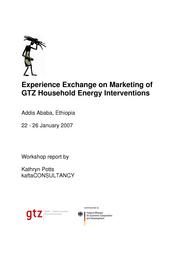
Report - Addis Ababa 22 – 26 Jan. 2007
The objective of this workshop was to discuss and analyse marketing strategies for stoves. Particular emphasis is given to aspects of marketing using the ‘4 Ps’. The workshop content focused on the Ethiopian situation; however, various examples are from different GIZ projects in Africa and are applicable to many developing countries. Very helpful examples of price chains are explained.
References
This article was originally published by GIZ HERA. It is basically based on experiences, lessons learned and information gathered by GIZ cook stove projects. You can find more information about the authors and experts of the original “Cooking Energy Compendium” in the Imprint.
Top of the Page
--> Back to Overview GIZ HERA Cooking Energy Compendium


